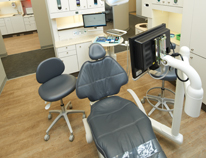
Healthy Mouths,
Healthy Kids
Learn how you can help children achieve their best by supporting
oral healthcare organizations.
At Patterson Dental, we place a high priority on children’s oral
healthcare and partner with a number of organizations dedicated to
advancing children’s dental health. In honor of the American Dental
Association’s (ADA) National Children’s Dental Health Month in February,
we invite you to learn more about this event and other organizations
that work hard all year to ensure that every child, no matter his or her
socioeconomic status, grows up with a healthy, beautiful smile.
Why is children’s oral health important?
> In the U.S., oral disease causes kids to miss 51 million school hours and
their parents to lose 25 million work hours annually.1
> Oral disease disproportionately affects children from low-income
families and these children have almost twice the number of decayed
teeth that have not been treated by a dentist as compared to others
in the general population.1
> Left untreated, the pain and infection caused by tooth decay can
result in problems with eating, speaking and learning, and early tooth
loss can result in reduced self-esteem and failure to thrive.2
> Children and adolescents with oral health problems are more likely to
have problems at school and less likely to do all homework, compared
to those without oral health problems. They are also more likely to feel
worthless and inferior, shy, unhappy, sad or depressed.2
> When children’s acute oral health problems are treated and they
are not experiencing pain, their learning and school attendance
records improve.2
National Children’s Dental Health Month
Every year in February, the ADA encourages dental professionals across
the U.S. to turn their attention to helping children develop a lifetime of
good dental habits. The ADA produces a series of educational materials
around a common theme — this year, the theme is “Join the Super
Smile Team!” — and provide the resources to dental teams, teachers
and schools, and parents and guardians. The adults use resources like
activity sheets, story books and videos to engage kids in learning about
taking care of their teeth.
Check out the ADA’s available resources at ada.org. |
|
|
|
© 2025 Patterson Dental. All rights reserved.















 PRINT
PRINT SHARE
SHARE